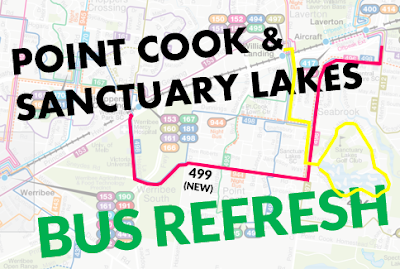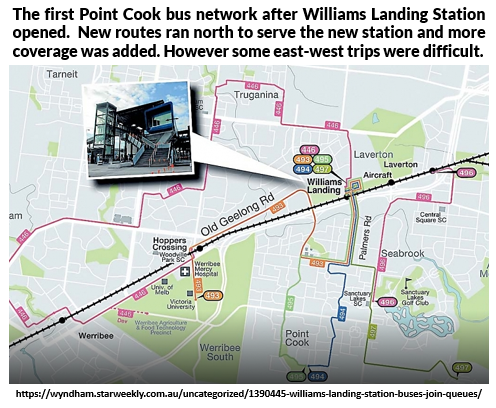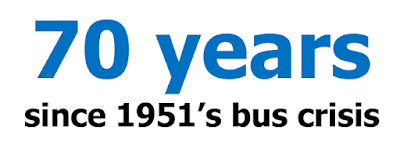Against most expectations Labor won enough seats to form a minority government after the 1999 election. The previous Kennett Coalition government was praised for having reduced state debt but its asset sales and spending cuts in health, education and (to a lesser extent) transport had hurt. When the economy revived the benefits were seen as flowing to Melbourne rather than being spread across the state. Labor tapped into this sentiment with the famous 'two taps' advertisement.
The result was a large swing in seats around large regional centres like Ballarat, Bendigo and Geelong. This was enough to deliver government with the help of regional independents who were upset with the Kennett government.
Transport was intertwined with this. The Kennett government had famously closed several regional rail lines. In 1999 Labor promising a revival program, involving reopenings and 'Regional Fast Rail' to the major centres. It was politically popular and helped win regional seats.
The Bracks government was re-elected with a large swing to it in 2002. This allowed it to hold office in its own right. It retained power in 2006 with a reduced but still comfortable margin.
However the regional rail program's cost blowouts, a view on what was considered fiscally responsible, surging population growth and poor advice from the Department of Transport sowed the seeds for a metropolitan public transport crisis that the (now) Brumby government was ill prepared for.
Warning signs were in Track Record statistics as early as 2004. Metropolitan trains were getting less reliable and more crowded each year with no end in sight. However train performance issues were ignored year after year in budget after budget. 'Blame the private operators' was the line.
This was partly due to a 'hands-off' franchise mentality that started under Kennett and solidified as conventional practice in the early Bracks years. Despite the frequent rebranding of trains and trams, a key aim of rail franchising, ie to allow the government to shirk responsibility of ensuring a reliable service, was never fully accepted by increasingly grumpy passengers.
When the Brumby government did decide to act it was too little and too late. Promises of grand infrastructure did not address the reality of lateness for work, missed appointments and childcare penalty fees caused by increasingly frequent rail network meltdowns.
Taxpayer-funded advertising campaigns only added insult to injury. Hence in 2010 marginal seats (particularly along the Frankston line) swung towards Ted Baillieu's Liberal-National Coalition to end eleven years of Labor rule.
That's the broad sweep. For the details of who thought what when, here's a summary of the transport aspects of Catch and Kill.
P157: Linking regional Victoria to rail went against the ‘natural inclinations of the bureaucracy’
P158: Bracks staffer who commuted from Ballarat (Dan O’Brien) gave Bracks idea for Regional Fast Rail. Rationale was spreading benefits of growth outside Melbourne.
P158: RFR costs kept rising.
P176: Treasury opposed putting significant transport goals into Melbourne 2030
P176: Assumption that people would blame Kennett’s privatisation for train problems when it was seen as a public service.
P176: Peter Batchelor said that govt’s fundamental error was underestimating patronage growth.
P177: John Brumby said that cost blowouts on RFR slowed metropolitan rail upgrades.
P177: Bracks said that there weren’t many parts of govt where they got inaccurate advice but PT was one. Treasury consistently underestimated population & jobs growth.
P178: Bureaucracy and political staffers dismissed PT’s political importance as they thought only 10% of people used it. A pervading view that roads more important than rail.
P181: Overarching theme of financial responsibility, balancing the budget and not being captive to Canberra (strong finances allowed Victoria to fund some things alone eg the Synchrotron).
This limited spending on things that needed it – eg metropolitan train services – until too late.
P181: DoT very road focused. Did not believe PT patronage would go up.
P181: Opinion polling (GAMS) led Labor to a false sense of security. PT not seen as top priority and Labor were thought better managers of this than Coalition. PT not seen as vote changer.
P192: Discusses National Express walkout. Had to find $400m. That took the entire spare amount Treasurer Brumby had set aside for other areas. Hence breaking a promise and building Eastlink as a toll road.
P205: 2003 budget did not buy new trains. But it allocated $11m to bus services. Brumby said they put a lot of money into buses. But saw no political dividend – “not sure if people associate buses with the state govt” Note: at the time buses had private operator liveries, not Metlink as it could have been then nor PTV as it is now. Cain government minister Steve Crabb describes Geelong's successful bus reform with unified livery here.
P283: Lynne Kosky was good minister but had bad fortune due to rail meltdowns and myki (which was high risk being an IT project).
P283: John Brumby said that core of myki problem was DoT gave wrong advice on awarding tender (KAMCO who had no experience). Regretted not challenging this.
P283: Sharon McCrohan was critical of Rob Hulls for not seeking a more challenging/tougher portfolio like public transport.
P308: Premier’s speech in late 2008 announced major rail infrastructure projects (but too late)
A continuing theme was that the government was (or thought it was) poorly served by advice from the transport bureaucracy. Notable examples include its tepidness regarding regional rail, the underestimation of train patronage growth and of course myki (where, in retrospect, it is hard to argue that the contract wasn't wrongly awarded).
This patchy record makes premier Daniel Andrews’ use of external advisers to develop the Suburban Rail Loop instead of the Department of Transport more understandable, despite the internal toes it trod on. The same might apply to any minister wishing to pursue radical projects where existing processes are wanting or incumbents may hold unhelpful or obstructive views.
As an example Jeff Kennett's rail splitting and franchising was implemented by a 'Transport Reform Unit' in the Department of Treasury and Finance. As opposed to the department which could carry attitudes and people from the previous Cain and Kirner years including limitation on what might be possible due to union power and labour movement factionalism (which brought down the premierships of both John Cains).
One could argue (as the state Auditor-general did) that the Transport Reform Unit achieved its objectives of cutting costs and even improving some aspects of performance. However The TRU's failure to see the network as a whole led to a wilful fragmentation of the network that subsequent governments had to waste time bringing back together.
If Minister Carroll wants more than glacial progress on bus reform, he will need to oversee massive increases in the capability to deliver. Currently bus reform is run as a slow moving small scale 'cottage industry', with reforms to only a few of Melbourne's 350 bus routes per year. Unreformed bus networks operate in about two-thirds of Melbourne's suburbs and some neighbourhoods have been without even hourly 'minimum standard' buses for 30 or more years.
Transport internal processes are so borked that it takes about as long to add a new bus route as to do a major capital works project like grade separate a level crossing. Even timetable upgrades that merely work the existing bus fleet harder on an unchanged existing route take much longer than they should.
Accelerated delivery could either be through a dedicated LXRP-style unit (good for focus but carries a risk of fragmentation) or a massive increase in the DoT's ability to deliver. There is currently a process of recruiting more people to the part of the Department dealing with bus reform. Internal process improvements and possibly redirecting resources from other areas could further augment capacity.
Anyway that's straying off today's topic. What doesn't the book mention? I'd have liked the book to cover various promises, schemes and expectations that were raised in 1999 but did not happen. For example we still don't have passenger trains to Leongatha or Mildura. We didn't get a tram extension to Knox (only half-way). Expectations of rail to Rowville were raised but not met. Ditto for a third track to Dandenong for express trains.
I assume that these projects did not happen due to a wish to be seen as fiscally responsible in order to exorcise the ghosts of the Cain and Kirner era. Public transport would likely have been considered a money sink, particularly due to project cost blowouts and the abovementioned National Express walk-out.
In contrast the policy context had changed by 2014, where expansive (and expensive) 'big build' infrastructure programs were back in fashion with the 2010 coalition government seen as doing too little. The Coalition still used the 'financially incompetent' line to bash Labor but it was tied to specific projects (eg myki and the desalination plant) rather than more generally. Also, by 2014 hostile voter memories of Cain / Kirner had dissipated compared to more recent memories of Bracks (who was either liked or generated no serious revulsion even amongst opposition voters).
If you have any interest in Victorian politics then you should definitely buy Catch and Kill. If your interest is more narrowly transport policy then it's still worth reading as it gives you the reasons for some key decisions being made (or not being made).
You can get Catch and Kill via various websites including Amazon. Using this link supports Melbourne on Transit (at no extra cost to you).
2025 update: Author compares and contrasts with Andrews/Alan government. Video here.



























